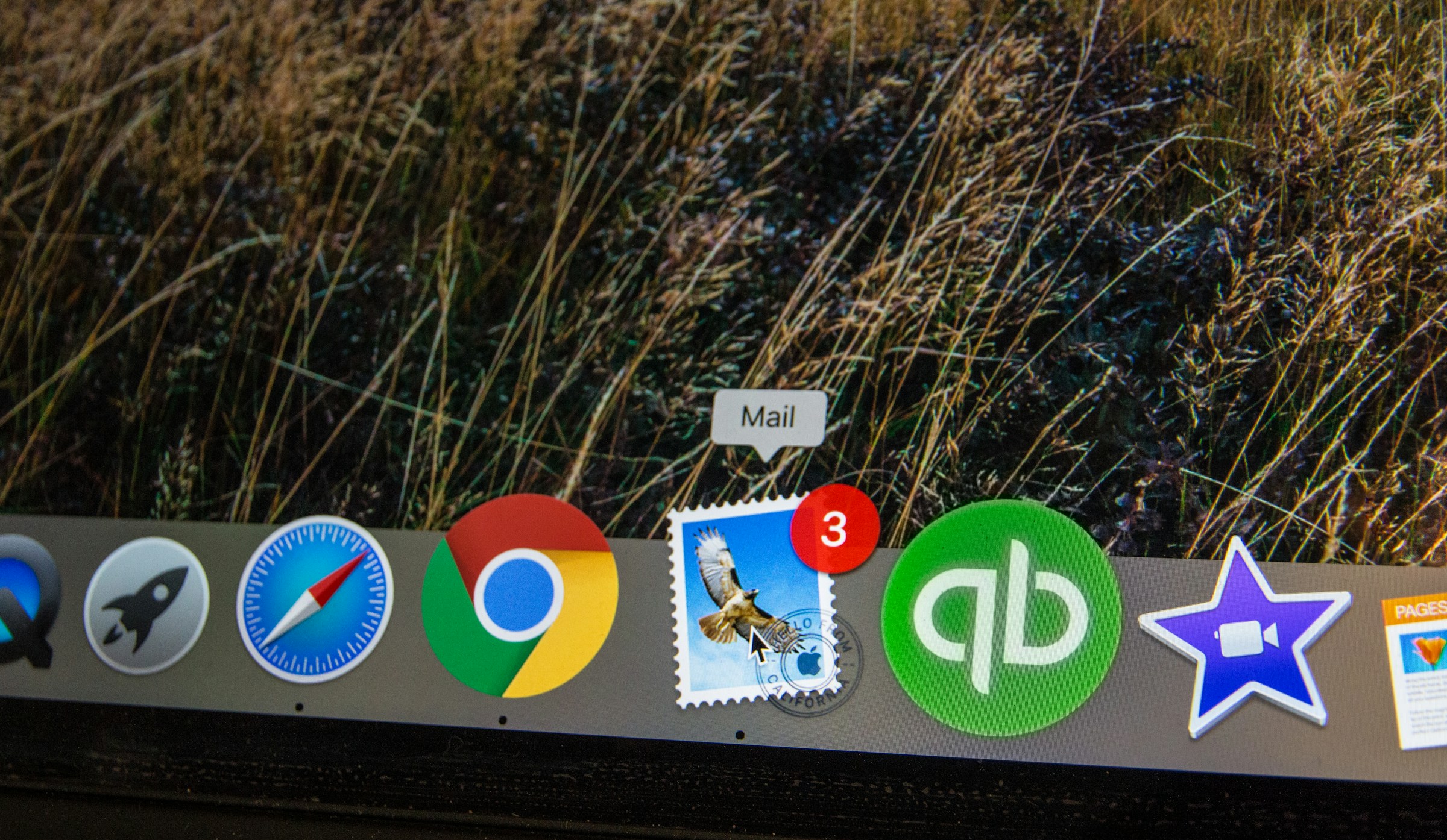Apr 30, 2025
What is a Warm Email?

A warm email is a personalized message sent to someone with whom you already have some connection. This could be a:
Mutual contact
Previous interactions
Shared communities
Demonstrated interest
The purpose of warm emails is to build on existing rapport and increase the likelihood of engagement or conversion. Warm emails are about connecting with people who have shown some interest in your business by:
Visiting your website
Signing up for your newsletter
Doing something similar
In warm emailing, you have the prospect’s consent to receive email conversation by showing some interest in your product. Hence, the goal of a warm email is typically to nurture the relationship, provide value, and move the conversation forward in a more personalized and meaningful way.
Cold Email vs. Warm Email
What’s the difference between a cold email and a warm email? A cold email is sent to a sales prospect you’ve never connected with before, whereas a warm email is sent in a more strategic, targeted manner. Cold emails aren’t as specific, but still crucial for a sales team. Successful cold emails can lead to warm emails further down the sales funnel, so it’s important to utilize both.
Advantages & Limitations of Cold Emails
Let’s discover the pros and cons of using cold emailing for your B2B business.
Advantages of Cold Emailing
You can send bulk emails to an unlimited people to find leads.
It is cheaper than other marketing and prospecting methods.
It can be managed by a tiny team or even a single person.
It can be done from anywhere in the world. No Boundaries
Can get most of it automated.
Limitations of Cold Emailing
Need to follow GDPR compliance.
We must find the best cold emailing software for quality leads, as not all tools promise a reliable B2B lead database.
Need a learning curve to draft spam-free cold emails.
Advantages & Limitations Of Warm Emails
Let’s discover the pros and cons of using warm emailing for your B2B business.
Advantages of Warm Emailing
Great odds for boosting engagement and sparking conversations.
Effortlessly build and increase brand awareness.
Lower risk of being flagged as spam.
Limitations of Warm Emailing
Reliance on current leads.
Risk of overextending and losing potential prospects.
It is challenging to attract fresh leads.
Maintaining user engagement can be labor-intensive.
Cold Email Vs. Warm Email Examples
This section will give you cold email vs. warm email examples (templates) that you can use immediately. To simplify it, we will divide our cold email vs warm email examples use-case-wise. Easy? Let’s see examples now.
A Cold Email Template
1. For Introduction
Subject: Hey {First Name}, we should connect.
Hello, {{First Name}},
Myself {{Name}} and I work with {{Company Name}}. I saw your {{Share social media post}} and realized we share common interests. I also talk about {{topic}} and share valuable insights. Connect with me by replying to this email or calling me on {Phone Number} if you feel this excites you.
Thanks For Your Time {{First Name}}
2. For Offering Services
Subject: Hey there {First Name}}, I can help you with {{Pain Point}}
Hey, {First Name},
Glad to connect with you again. I have seen your face {{Pain Point}} since we last connected. I have {{Mention Experience}} in solving situations like yours for the past 10 years. I can help. How would you think about hopping on a call? Here is my {{Number}}.
Best regards, {{First Name}}, {{Company Name}}
3. For Following Up
Subject: I guess you missed my message, {First Name}
Hope you are having a good day, {First Name}.
I saw you struggling with the same {{Mention issue }} a few days back. And, you also struggled recently with {{any new issue}} too! I would like to remind you that my offer to connect on the same is still open in case you missed my last email. Here is my {{Contact details}}. Let’s get on a call soon!
Regards, {First Name}
A Warm Email Template
1. For Introduction
Subject: Hey {First Name}, Nice connecting with you.
Hello there {First Name}.
Welcome to the {{Company Name}}’s email list. We realized you just signed up for our newsletter. Great choice! You can expect updates, new blogs, and similar conversations from our weekly newsletter.
Once again, thank you for joining the {Company Name} tribe.
Regards, {{First Name}}
2. For Offering Services
Subject: We know you like us! {{First Name}}
Hello {First Name}, we have known each other for a long time, and it’s time to take things to the next level. We see you enjoy our email conversations, and like our {Product Name}. Let’s connect; we will help you get the most benefits from using our product.
Click on {Link} to book a demo call.
Best, {First Name}, {Company Name}
3. For Following Up
Subject: You missed it, {{First Name}}!
You want to invest in good things, right? We know you were rechecking our product! We see you missed our last email regarding {{State the offering}}, {{First Name}}. We would love to connect with you to help make that long-pending decision.
We have some new updates as well. Check it here {{Link}}.
Many Thanks, {{First Name}}, {{Position}}

Related Reading
• Hunter.io Alternatives
• Seamless AI Competitors
• How Long Should a Cold Email Be
• ZoomInfo Alternative
• How to Warm Up Email Domain
• Cold Email Lead Generation
How to Write a Warm Email That Your Prospects Will Open

Understand Your Email’s Purpose: Start a Conversation
Many sales reps never see success through their email prospecting efforts because they try to do too much in each message. When sending warm emails, you have one purpose and one purpose only: to start a conversation, preferably on the phone, with your prospect. That’s it. In that sense, warm emails are no different than cold emails: You’re not trying to make a sale. You’re not trying to convince the recipient to start their free trial or prove that my company’s offerings are better than the competition. I’m simply trying to book a phone call or schedule a meeting with them. When you understand this, everything becomes much easier.
Know Your Prospect: Research for Relevance
Now that you understand the purpose of your email, it’s time to do research. You need to “know” the person you’ll be contacting:
Which company do they work for, and what position do they hold
The problems they have that my company’s product can solve, etc.
You can find many of these details via LinkedIn. The more you know about your prospects individually before contacting them, the better. Research allows your messages to sound highly relevant and personalized. It’s how you turn traditional cold emails into a strategic warm email prospecting system.
Keep It Short: Pay Attention to Email Length
Brevity is essential when conducting warm email prospecting. Keep your warm emails short and sweet, around the 125-word mark, give or take. Remember, your prospect didn’t ask me to contact them. They’re probably busy, and if they open my message and see a giant wall of text, they’ll delete it without reading anything. 125 words should be enough to state the value my company brings to the table, establish some credibility, and ask to connect on the phone.
Get on Your Contacts’ Radars: Pre-Contact Outreach
As we mentioned earlier, a pre-contact touch makes your recipients more familiar with you and more willing to open your initial email. That can take several forms:
Use your recipients’ email addresses to create a custom ad audience on Facebook or LinkedIn, and run an ad for your company targeting all the people I plan on contacting the following week.
Send connection requests to my recipients on LinkedIn before emailing them.
Viewing their profiles without making a connection request could get them curious about who I am, so they look at my profile.
Ask a mutual connection to send out an introduction email. If my company uses direct mail assets such as postcards or catalogs, send something to my upcoming recipients before I reach out to them personally.
Establish a Meaningful Connection in Your Warm Email
Effective outreach begins with establishing a meaningful connection that resonates with the prospect. This involves identifying a point of commonality, whether business-related (such as a shared frustration with current tools or a recent company achievement) or personal (like a mutual interest). This initial connection aims to build rapport and trust, creating a bridge between the sender and the recipient. By understanding the prospect's challenges or interests, communicators can personalize their outreach and increase the likelihood of engagement, ultimately fostering stronger professional relationships.
Craft an Engaging Email Subject Line
An eye-catching subject line can distinguish between a prospect opening your email and ignoring it altogether. One of the most successful approaches reported by marketers is to personalize the subject line, including your recipient’s first name. For the best results, try to keep your subject line below 50 characters and steer clear of using overly “salesy” language that could be mistaken for spam, like “Buy this now!” or “Hurry before this limited offer expires!” Sales teams can utilize free, AI-powered subject line testing software to see the potential open rates of their emails.
Include Your Warm Email Value Statement
The value statement should be a concise (one to two sentences) articulation of what the company offers, for whom, and its key differentiator. It is crucial to resist the urge to enumerate all features or comparative advantages at this initial stage. The primary goal is to pique the prospect's interest and warrant further discussion, such as a phone call. To maximize impact, the value statement should directly address the prospect's identified pain points, demonstrating a clear understanding of their needs and highlighting the relevant benefits of the solution. This targeted approach increases the likelihood of resonance and engagement.
Build Trust Through Credibility
I must include what Ed calls a “credibility-building URL.” This title is slightly misleading. I don’t necessarily need a link, but I need to share some credibility boosters. A link is just the easiest way to do it in most circumstances. What kinds of things build credibility? It depends on what I’m selling, but I can never go wrong with customer testimonials or case studies. I’ll share if my company has a section on its website containing these materials. I’ll share the stories most relatable to my prospect when sharing case studies. For example, if my prospect works in the health care industry, I’ll send them case studies featuring my other customers. By adding credibility to my warm email prospecting efforts, I’ll convince my prospects that a phone call with me is worth their time.
Add a Clear Call to Action (CTA)
I must end my warm email with a strong call to action (CTA). Fortunately, this step is quite simple. I don’t need to concoct some elaborate CTA or rack my brain trying to come up with the most enticing phrase. Instead, I’ll keep it simple and end my warm email with an invitation to connect. This is best done in the form of a question. For example, “Does it make sense to connect on this?” or “Would you be interested in scheduling a 15-minute call soon?” I always recommend ending my email with a question. Why? Because, as humans, we’ve been trained our entire lives to answer the questions asked of us. Ending my message with a quick query is a small psychological trick to boost my response rate.
Time Your Email Prospecting Well
A well-timed email will likely see more opens and responses, and understanding your audience is the first step to timing my email prospecting well. My email service provider should provide basic email tracking tools that help me determine what days of the week and times of the day prospects most interact with my emails. I’ll use this information to adjust my strategy and send emails at times I think will offer the highest open and response rates.
Remember to Follow Up on Emails
One of the primary reasons for a failed email prospecting campaign is that sales team members often fail to follow up on the emails they’ve sent. In reality, follow-up emails frequently receive a higher response rate than the initial warm email. Ensure I have a structured follow-up strategy to send subsequent emails to my prospects after the first email. While I’ll want to avoid harassing my prospect, it’s also important not to give up and to persevere for as long as possible. Don’t be afraid to use a multi-channel follow-up strategy either. For example, with a text messaging feature added to my CRM, I can follow up using SMS, increasing the chance of my prospect responding.
Optimize Using A/B Testing
Industry benchmarks are a great way to gauge my email campaign’s performance. I can take things further by using A/B testing to optimize my warm email outreach for my target audience. To test and enhance my emails, I’ll create two versions where I change only one element, such as my CTA button placement or the email subject line. I will select two small portions of my target audience segment to receive each email version and use my email tracking metrics to determine which performs better. Then, I’ll send the most successful variant to the remaining prospects on my email list to ensure optimal results. Continual testing in this way will offer deeper insight into what works and what doesn’t, helping me improve my prospecting emails and response rate over time.

Related Reading
• Best Email Warm Up Tools
• How to Send an Email to a Prospective Client
• Freight Broker Email Template
• Cold Email Manifesto
• How to Warm Up an Email Address
• How to End a Cold Email
• How to Cold Email a Recruiter
• Cold Email vs Spam
Warm Email Best Practices and Tools

Best Practices for Warm Email Outreach: What You Need to Know
Warm email outreach can be a highly effective strategy for garnering new business. Executing a warm email campaign requires strict adherence to best practices to ensure your emails are effective and well-received by your audience. Here are some tips to keep in mind when crafting warm emails.
Understand Your Audience
Before you start writing warm emails, take the time to understand your audience.
Who are you contacting, and why?
What do they do?
What are their interests?
What kind of information are they looking for?
Segment your email list to organize recipients with similar characteristics. This way, you can personalize your outreach to address the needs of specific groups, helping improve your email open and response rates.
Craft Relevant Email Content
Once you identify your target warm email recipient and segment your audience, it’s time to start writing. Warm emails should be engaging, provide value, and highlight the recipient’s benefits. Use your research to create relevant content that will resonate with your audience.
Optimize for Mobile
Did you know that roughly half of all emails are opened on mobile devices? If your emails aren’t optimized for mobile, you risk losing half of your audience. Take the time to ensure your warm emails are responsive and look great on all devices.
Compliance with Regulations
Even though warm emails are less intrusive than cold emails, you should still adhere to legal requirements. For instance, the CAN-SPAM Act in the United States and the GDPR in Europe lay out rules for sending commercial emails, including warm ones. Following these regulations will help you avoid penalties and ensure your emails reach the intended audience.
Measuring and Analyzing
Warm emails can enhance your cold email outreach by establishing rapport and trust. It’s essential to understand that warm emails are still a form of email marketing. Like any email marketing campaign, you should track the success of your warm email campaigns through open rates, click-through rates, and conversions to refine your approach.
Tools for Effective Warm Email Outreach
Implementing the best practices for warm emails can enhance the effectiveness of your outreach campaigns. Utilizing email marketing tools can help you achieve success even faster. Here are some email marketing tools to consider when writing warm emails.
Email Automation Platforms
Email automation tools like Mailchimp, HubSpot, or Brevo can simplify your warm email outreach. These platforms allow you to:
Automate your email campaigns
Schedule messages to send when appropriate
Segment recipients
Track analytics to measure success
A/B Testing Tools
A/B testing tools allow you to test different versions of your warm emails to determine what resonates best with your audience. Platforms like Mailchimp and HubSpot also include A/B testing features to help you refine your emails for better performance.
Analytics and Reporting Tools
Consider integrating tools that provide in-depth analysis and reporting on your warm email campaigns, enabling you to make data-driven decisions. For instance, if you use HubSpot for your warm email campaigns, you can easily track performance metrics and generate reports to help optimize future outreach efforts.
Considerations for Warm Email Outreach
When sending a warm email, the goal is to build trust and rapport with your recipient. Therefore, it’s essential to personalize your messages based on your recipient’s needs, preferences, and existing relationship with your business.
Personalization Tools
Use personalization software to personalize at scale, creating individualized content that resonates with your audience. For instance, you might include unique details about your contact’s business, such as recent company news or information about their product or service offerings.
Customer Relationship Management (CRM) Systems
Customer relationship management systems like Salesforce or Zoho CRM can help you track previous interactions and tailor your warm emails accordingly. These platforms allow you to log communications with prospects and customers to reference past conversations in your warm emails to jog their memory and reinforce familiarity.

Related Reading
• Wholesale Email Pitch Template
• Investment Banking Cold Email Template
• Bulk Email Services Providers
• How Many Cold Emails to Get a Client
• How to Find Emails for Cold Emailing
• Is Cold Email Illegal
• B2B Cold Email Best Practices
Start Buying Domains Now and Set Up Your Email Infrastructure Today
Inframail revolutionizes cold email infrastructure with unlimited inboxes at a single flat rate. With Microsoft-backed deliverability and dedicated IP addresses, we help scale their outreach efficiently:
Agencies
Recruiters
SDRs
You can think of us as the “Airbnb” of email infrastructure, letting you set up your cold email system without hassle.
How Inframail Benefits Your Business
At Inframail, we aim to streamline your email outreach efforts.
Our main benefits include:
Automated SPF, DKIM, and DMARC setup.
Dedicated email servers for each user.
16-hour priority support.
In short, InfraMail handles the complex infrastructure setup so you can focus on reaching more prospects. Whether you are an agency looking to scale outreach, a recruiter connecting with candidates, or an SDR driving sales, InfraMail provides a robust email infrastructure without the usual technical headaches and per-inbox costs.


